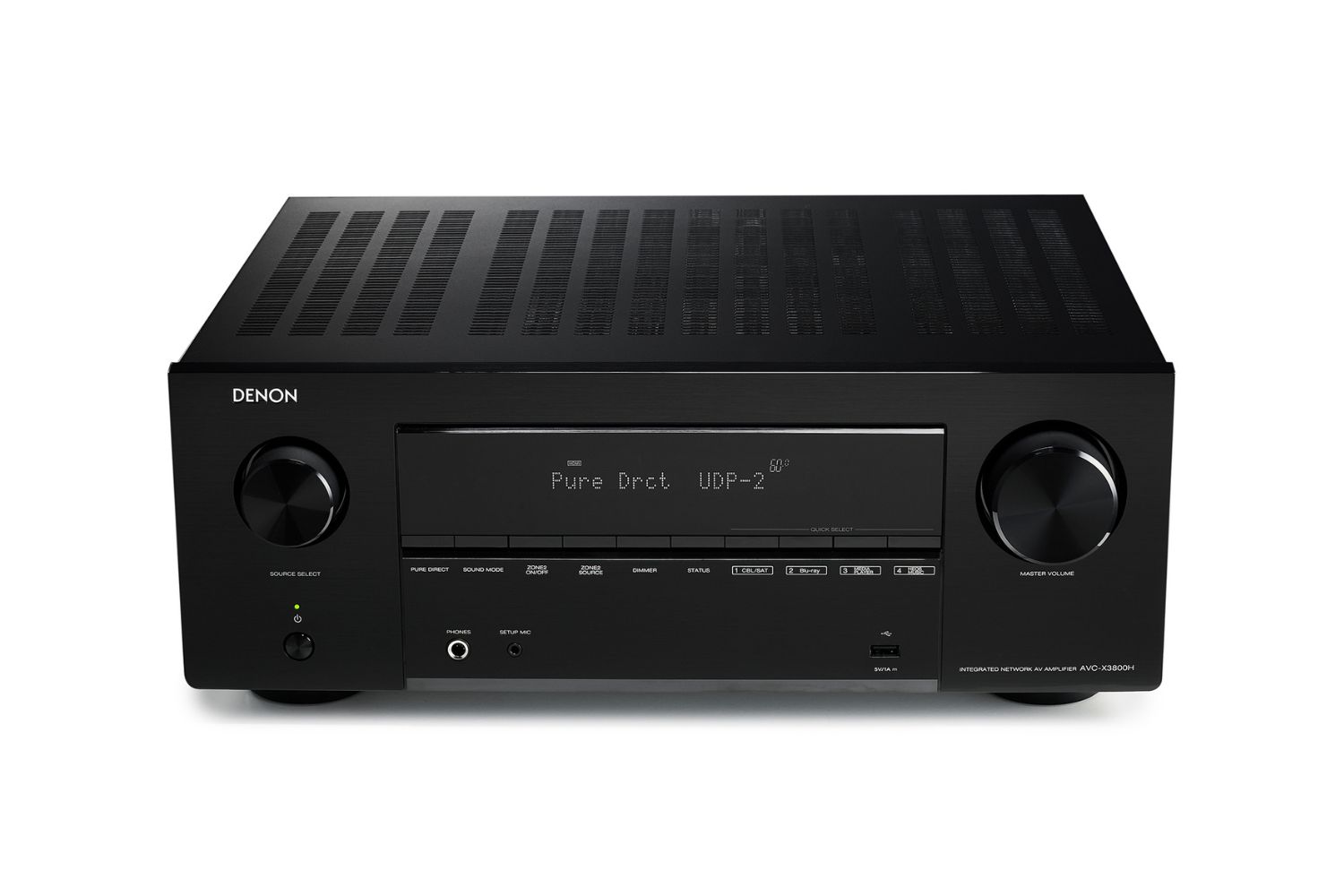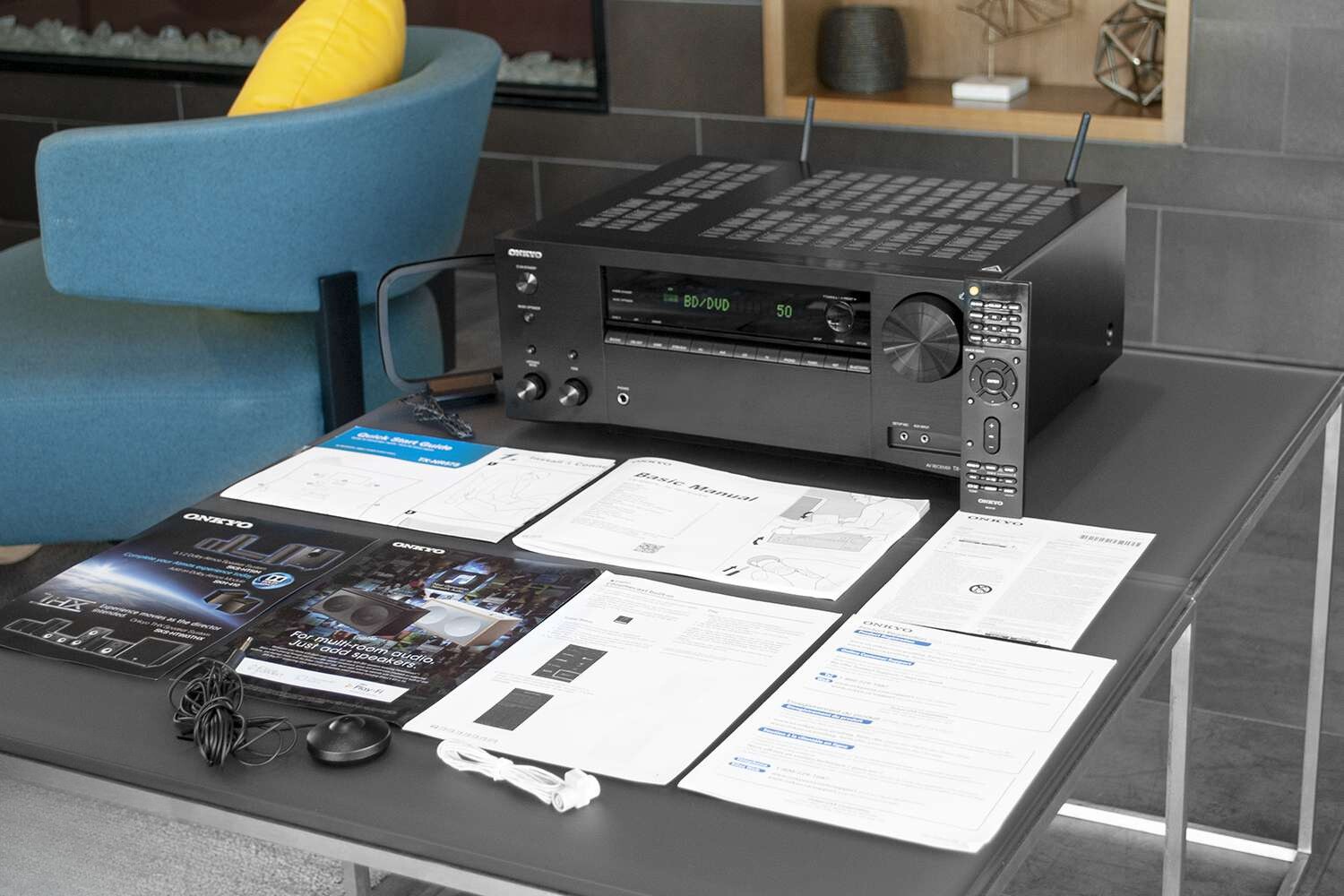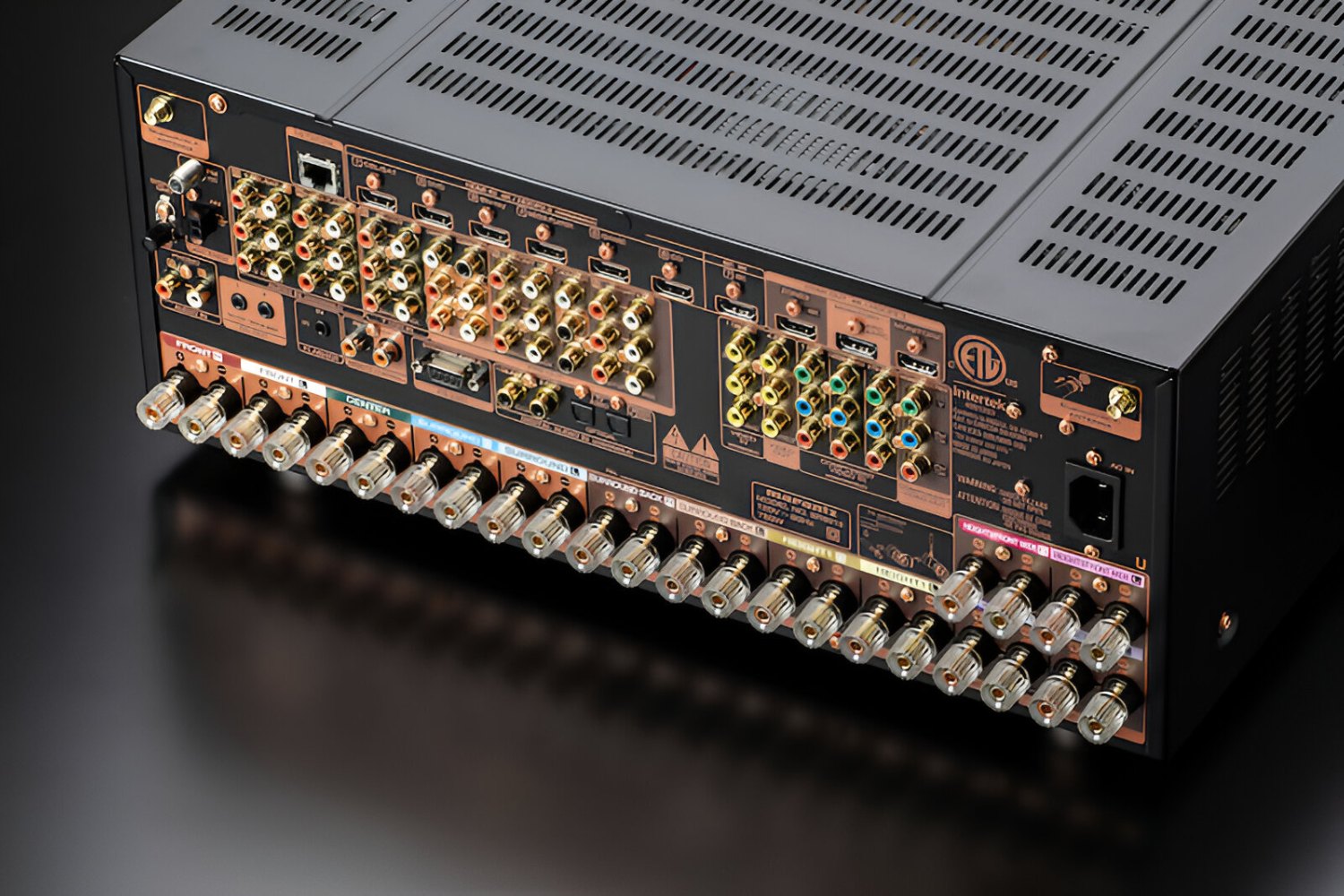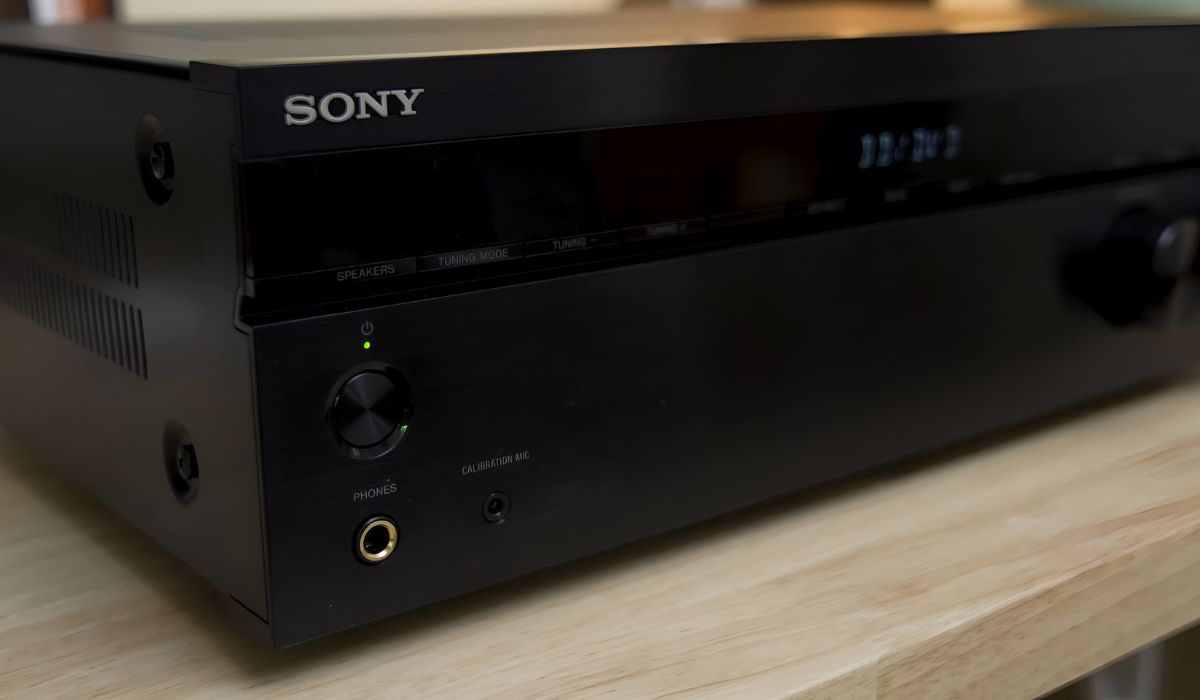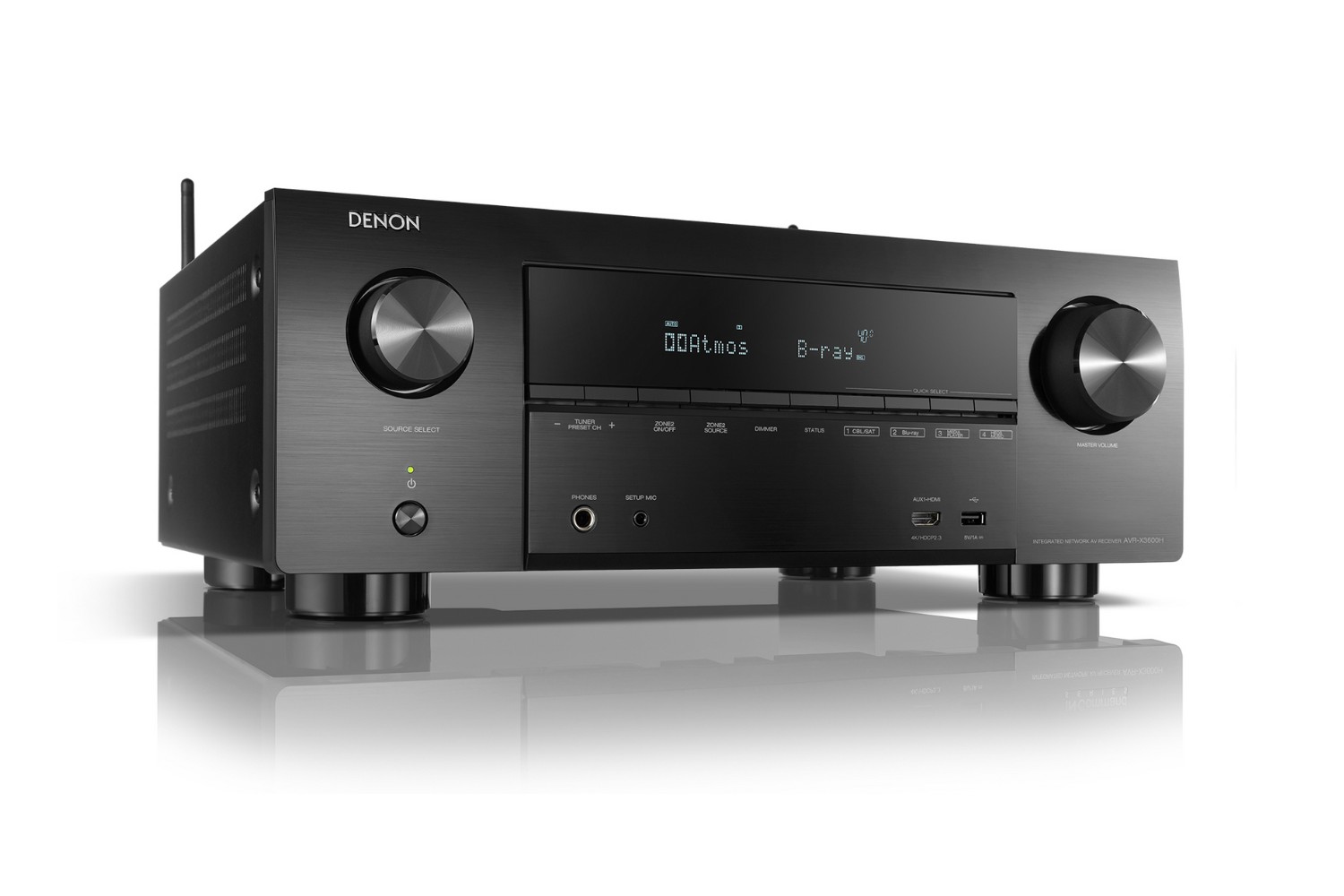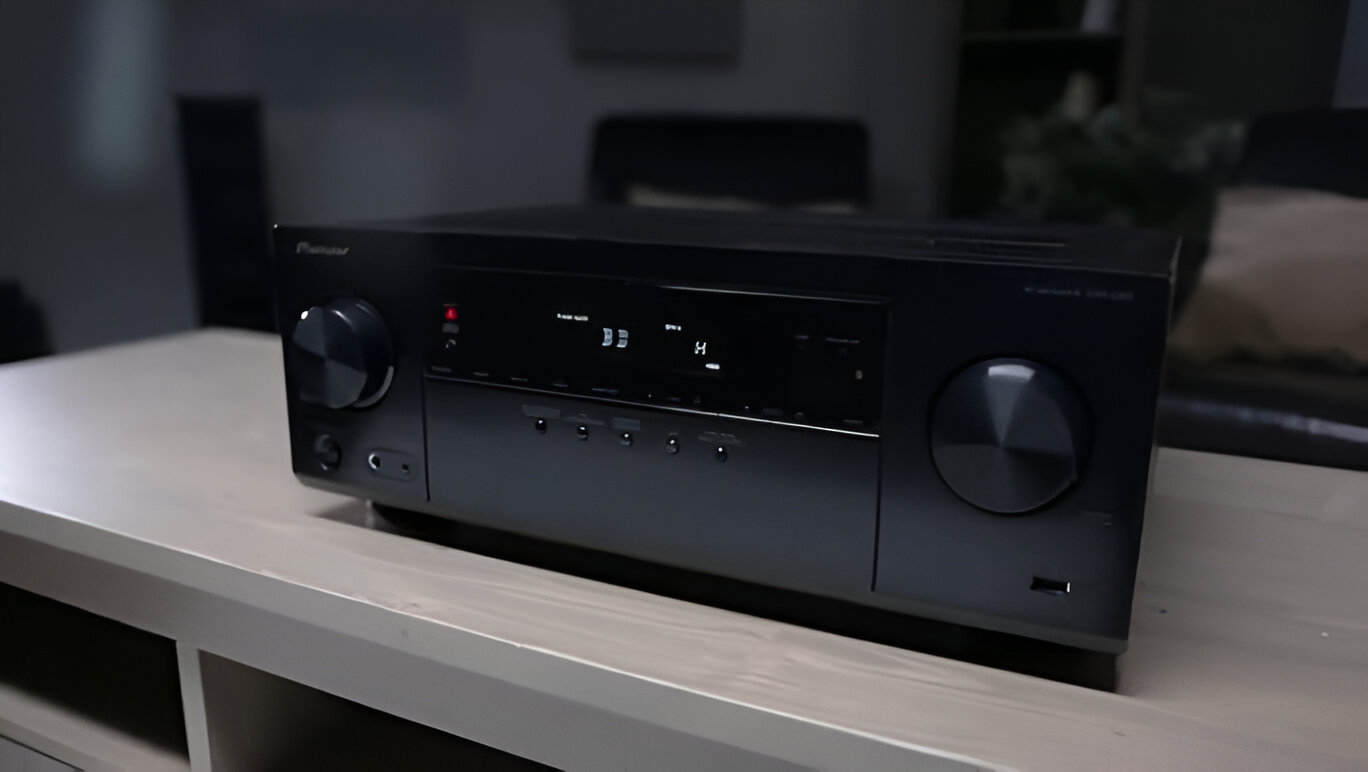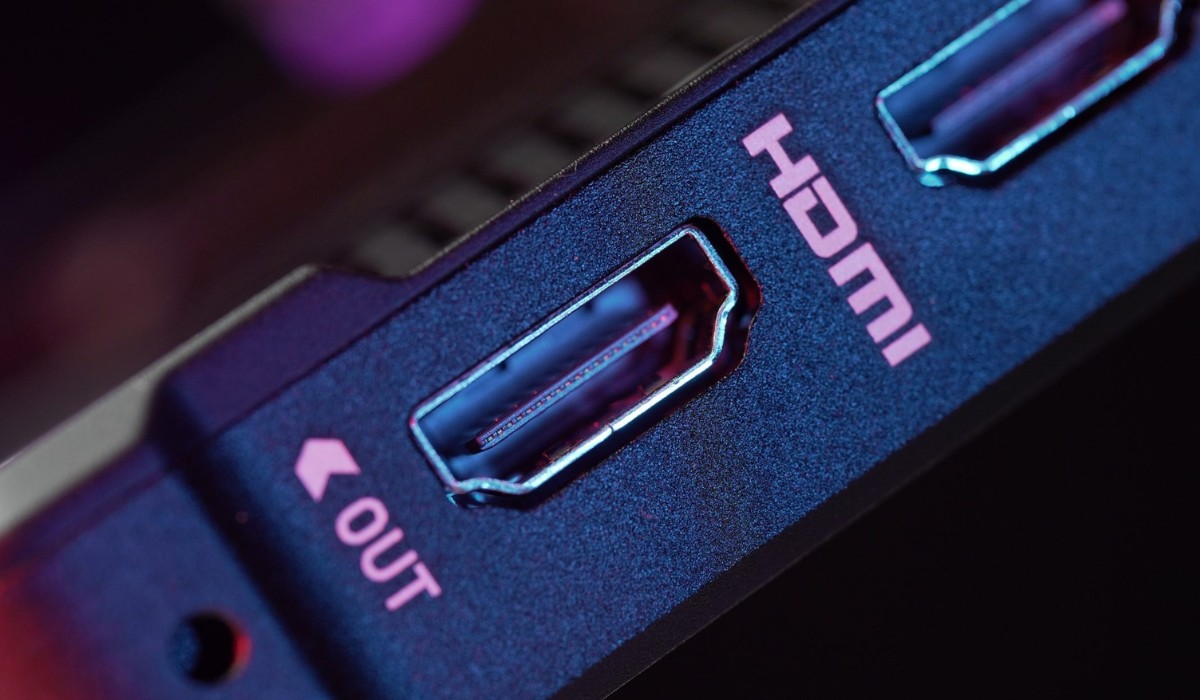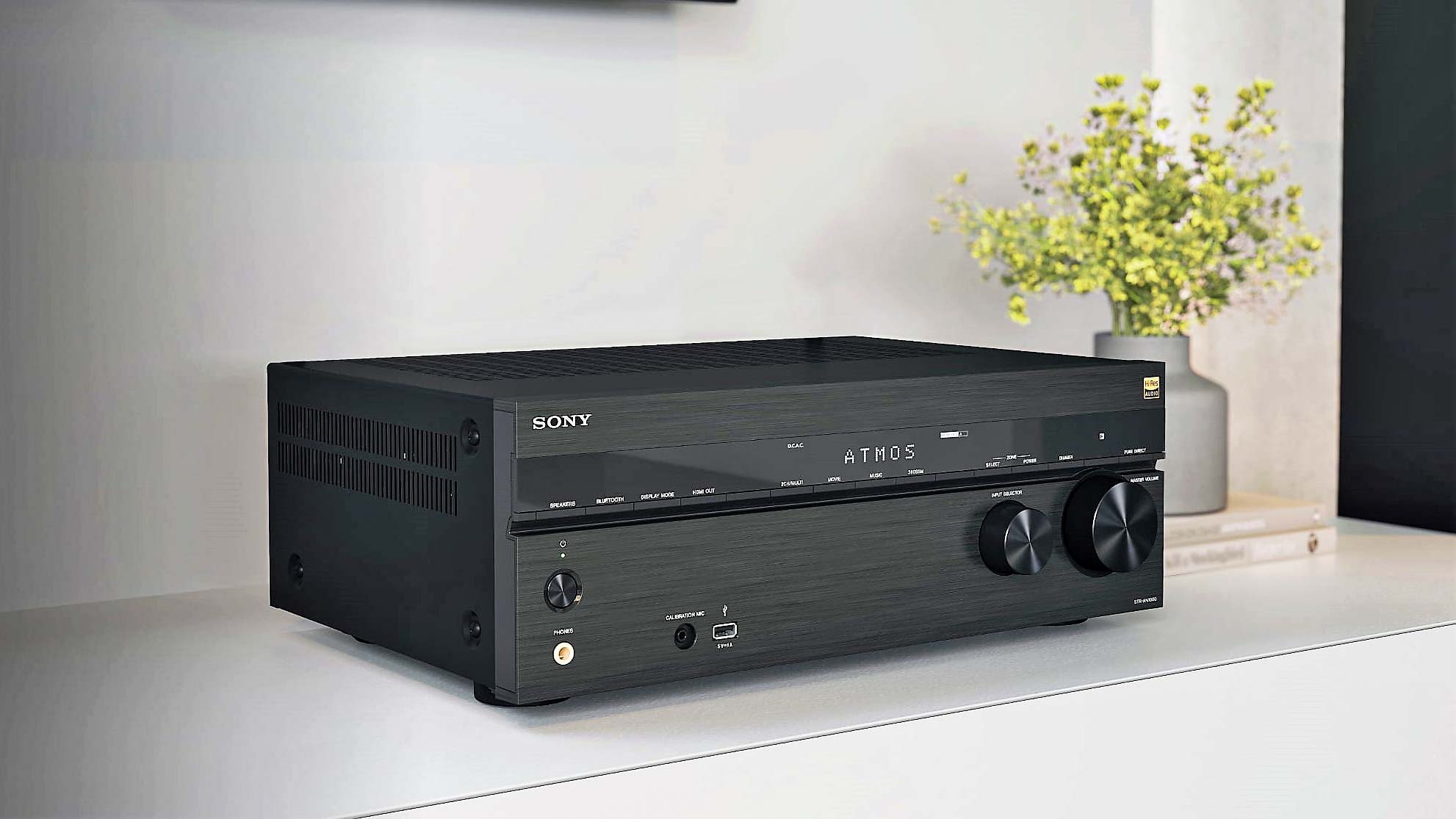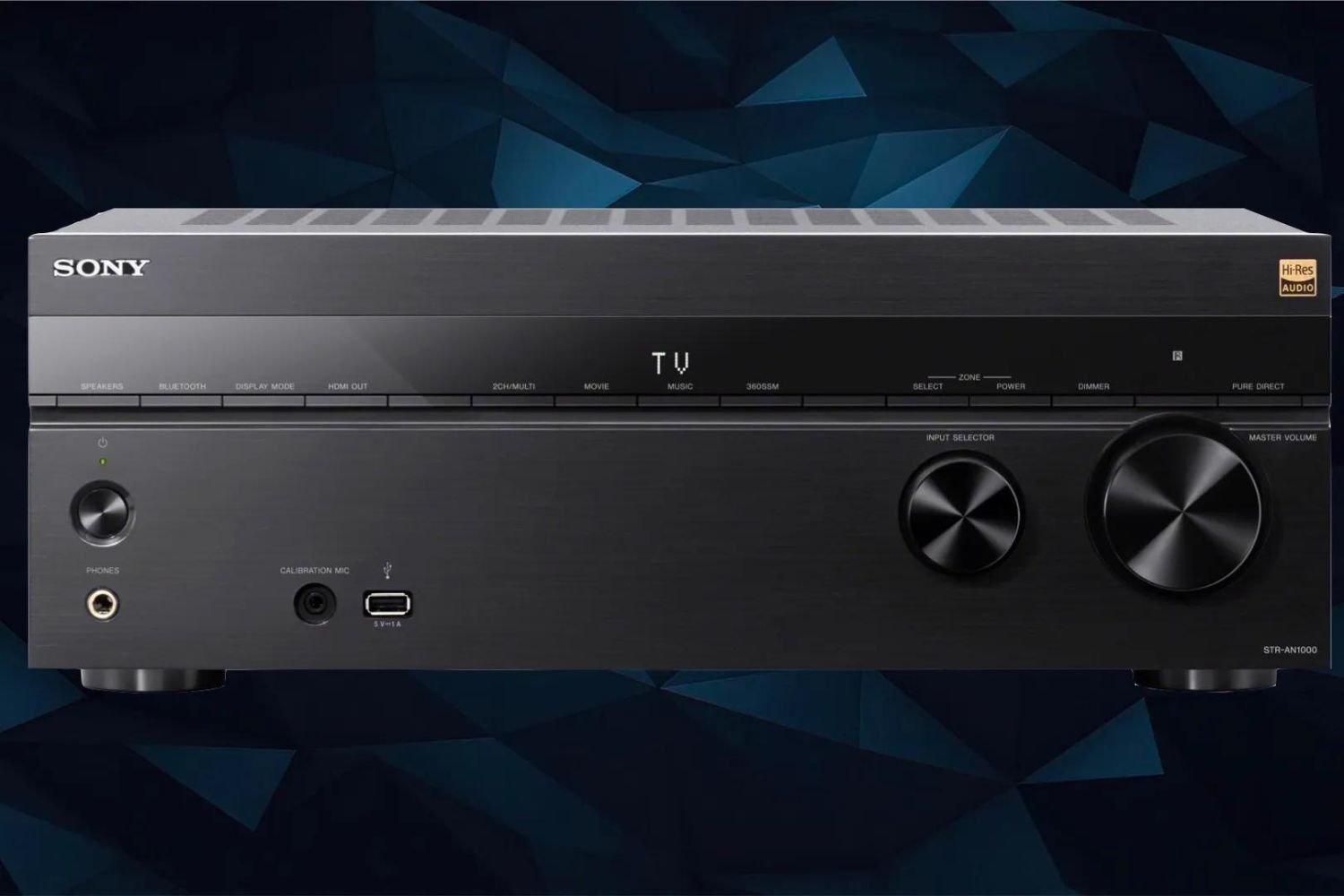Introduction
Welcome to the world of audiovisual technology, where the heart of your home entertainment system lies in the audio-video (AV) receiver. This sophisticated piece of equipment serves as the central hub for your home theater, orchestrating the seamless integration of various audio and video components to deliver an immersive viewing and listening experience. However, like all electronic devices, AV receivers require periodic updates to ensure optimal performance and compatibility with the latest technologies.
Firmware, the software embedded within the AV receiver, plays a pivotal role in its functionality. Similar to the operating system of a computer, firmware governs the fundamental operations of the AV receiver, including audio and video processing, input/output management, and network connectivity. As technology continues to advance at a rapid pace, firmware updates serve as essential maintenance to address bugs, enhance performance, and introduce new features.
Understanding the significance of firmware updates and the frequency at which they should be performed is crucial for every AV receiver owner. In this comprehensive guide, we will delve into the world of AV receiver firmware, exploring the importance of updating firmware, determining the optimal frequency for updates, considering the factors that influence update frequency, and providing step-by-step instructions for updating your AV receiver firmware. Whether you are a seasoned audiophile or a novice home theater enthusiast, this guide will equip you with the knowledge and confidence to keep your AV receiver performing at its best.
Join us as we unravel the intricacies of AV receiver firmware updates, empowering you to elevate your home entertainment experience and stay ahead in the ever-evolving landscape of audiovisual technology. Let's embark on this enlightening journey to discover the power of firmware updates and the art of optimizing your AV receiver for unparalleled performance.
What is AV Receiver Firmware?
AV receiver firmware represents the core software that governs the operations and capabilities of your audiovisual (AV) receiver. Much like the operating system of a computer, firmware serves as the foundational code that enables the AV receiver to perform its myriad functions, ranging from audio and video processing to network connectivity and system integration.
At its essence, firmware is a specialized type of software that is embedded within the hardware of the AV receiver. It is intricately woven into the electronic circuitry and components of the receiver, dictating how the device operates and interacts with external audio and video sources. This internal software is responsible for managing the receiver’s inputs and outputs, decoding audio and video signals, applying audio processing algorithms, and facilitating seamless communication with other devices in your home theater setup.
One of the defining characteristics of AV receiver firmware is its relative permanence. Unlike traditional software applications that users can install and uninstall at will, firmware is deeply integrated into the hardware of the AV receiver, typically residing in read-only memory (ROM) or flash memory. This inherent immutability underscores the critical role of firmware updates, as they provide the means to introduce enhancements, address issues, and adapt the receiver to evolving technological standards.
Furthermore, the firmware of an AV receiver is designed to be modular, comprising distinct components that govern different aspects of the device’s functionality. These components may include audio and video processing algorithms, network protocols, user interface elements, and compatibility layers for various audio and video formats. As such, firmware updates can target specific modules to deliver targeted improvements or feature enhancements without necessitating a complete overhaul of the entire firmware.
By grasping the essence of AV receiver firmware and its integral role in shaping the performance and capabilities of the device, you gain a deeper appreciation for the significance of keeping the firmware up to date. The next section will delve into the importance of updating AV receiver firmware, shedding light on the compelling reasons to stay abreast of firmware updates for your home entertainment system.
The Importance of Updating Firmware
Updating the firmware of your AV receiver is a critical maintenance task that directly impacts the performance, stability, and feature set of the device. This process involves installing new versions of the embedded software to address existing issues, enhance functionality, and ensure compatibility with the latest audio and video technologies. Understanding the importance of updating firmware is pivotal for maximizing the potential of your AV receiver and safeguarding its long-term usability.
One of the primary reasons to update AV receiver firmware is to address software bugs and performance issues. Over time, manufacturers may identify and resolve software-related issues that affect the stability or functionality of the AV receiver. These issues could manifest as audio or video distortion, network connectivity problems, or compatibility issues with specific audio or video formats. By releasing firmware updates, manufacturers can deliver targeted fixes to rectify these issues, thereby improving the overall user experience.
Besides bug fixes, firmware updates often introduce new features and capabilities to the AV receiver. These enhancements can range from additional audio processing algorithms and video upscaling technologies to expanded network connectivity options and compatibility with emerging audio and video standards. By staying current with firmware updates, you can unlock new functionalities that enhance the versatility and performance of your AV receiver, enabling you to fully leverage the latest advancements in home entertainment technology.
Furthermore, firmware updates play a crucial role in ensuring compatibility with external devices and content sources. As new audio and video formats, streaming protocols, and connectivity standards emerge, firmware updates enable your AV receiver to adapt and seamlessly integrate with these evolving technologies. This adaptability is essential for maintaining a future-proof home theater system that can accommodate a diverse array of audio and video sources, ensuring that you can enjoy the latest content without compatibility barriers.
Moreover, updating the firmware of your AV receiver is integral to safeguarding the device against security vulnerabilities and exploits. Just like any connected device, AV receivers are susceptible to potential security risks, and firmware updates often include patches and security enhancements to mitigate these vulnerabilities. By promptly applying firmware updates, you can fortify the security posture of your AV receiver, reducing the risk of unauthorized access and ensuring a secure home entertainment environment.
As we unravel the significance of updating AV receiver firmware, it becomes evident that staying abreast of firmware updates is not merely a matter of convenience but a fundamental practice for optimizing the performance, functionality, and security of your home entertainment system. In the subsequent section, we will delve into the optimal frequency for updating AV receiver firmware, shedding light on the considerations that influence the update cadence.
How Often Should You Update AV Receiver Firmware?
Determining the ideal frequency for updating the firmware of your AV receiver involves a nuanced consideration of various factors, including the manufacturer’s update release cycle, the presence of critical updates, and the specific needs of your home entertainment setup. While there is no one-size-fits-all answer to the question of update frequency, several guiding principles can help you navigate this decision effectively.
First and foremost, it is essential to monitor the release cadence of firmware updates from the manufacturer of your AV receiver. Manufacturers typically provide firmware updates to address software issues, introduce new features, and enhance compatibility. By staying informed about the release schedule, you can gauge the frequency of updates and assess whether they align with your preferences for keeping your AV receiver up to date.
Another crucial consideration is the presence of critical updates that directly impact the performance, stability, or security of your AV receiver. Critical updates, such as those addressing severe software bugs, security vulnerabilities, or compatibility issues with prevalent audio and video formats, warrant immediate attention and should prompt you to update your AV receiver’s firmware without delay.
Furthermore, the evolving landscape of audio and video technologies can influence the frequency of firmware updates for your AV receiver. As new audio and video formats, streaming protocols, and connectivity standards emerge, manufacturers may release firmware updates to ensure that their devices remain compatible with these advancements. In such cases, updating the firmware becomes essential to leverage the latest technologies and content sources seamlessly.
Additionally, your usage patterns and reliance on specific features of the AV receiver can influence the need for firmware updates. If you frequently utilize advanced audio processing modes, network streaming capabilities, or multi-zone audio functionality, staying current with firmware updates becomes more critical to ensure that these features operate optimally and remain compatible with external devices and content sources.
Ultimately, the decision of how often to update AV receiver firmware is a balancing act that hinges on staying informed about update releases, prioritizing critical updates, adapting to evolving audio and video technologies, and aligning the update frequency with your usage patterns and feature requirements. By adopting a proactive approach to firmware updates and remaining attentive to the factors that influence update frequency, you can optimize the performance, functionality, and compatibility of your AV receiver.
As we navigate the considerations that shape the optimal frequency for updating AV receiver firmware, it becomes clear that a tailored approach is essential to ensure that your home entertainment system remains primed for the latest audiovisual experiences. In the subsequent section, we will delve into the factors that should be considered before initiating a firmware update, empowering you with the knowledge to make informed decisions about maintaining your AV receiver.
Factors to Consider Before Updating Firmware
Before embarking on the process of updating the firmware of your AV receiver, it is crucial to consider several factors that can influence the decision-making process and ensure a seamless update experience. By carefully evaluating these factors, you can mitigate potential risks, maximize the benefits of the firmware update, and safeguard the stability and functionality of your home entertainment system.
First and foremost, it is essential to ascertain the specific changes and enhancements introduced in the new firmware version. Manufacturers typically provide release notes or documentation outlining the improvements, bug fixes, and new features included in the firmware update. Reviewing this information enables you to gauge the relevance of the update to your usage patterns, feature requirements, and the overall performance of your AV receiver.
Furthermore, assessing the stability and maturity of the new firmware version is paramount. In some instances, manufacturers may release firmware updates that are labeled as “beta” or “pre-release,” indicating that they are still in the testing phase. While such updates may offer early access to new features, they can also carry a higher risk of unforeseen issues. It is advisable to exercise caution when considering beta firmware updates and prioritize stability for your primary home entertainment setup.
Another crucial factor to consider is the backup and recovery mechanism for your AV receiver. Before initiating a firmware update, ensure that you have a reliable backup of your receiver’s settings, configurations, and calibration parameters. This precautionary measure can safeguard against unforeseen complications during the update process and facilitate the restoration of your AV receiver to its previous state if necessary.
Additionally, assessing the network and power conditions during the firmware update process is vital. Ensure that your AV receiver is connected to a stable and reliable network to facilitate the download of the firmware update files. Unstable or intermittent network connectivity can disrupt the update process and lead to incomplete installations. Likewise, maintaining a consistent power supply during the update is essential to prevent interruptions that could compromise the firmware update.
Moreover, considering the timing of the firmware update is crucial to minimize disruptions to your home entertainment experience. Plan the update during a period of minimal usage, ensuring that the update process does not coincide with scheduled movie nights, gaming sessions, or important audiovisual events. By choosing an opportune time for the update, you can minimize the impact on your enjoyment of the home entertainment system.
By carefully evaluating these factors before updating the firmware of your AV receiver, you can approach the update process with confidence, mitigate potential risks, and ensure a smooth transition to the latest firmware version. In the subsequent section, we will provide detailed step-by-step instructions for updating your AV receiver firmware, empowering you to navigate the update process with ease and precision.
Steps to Update AV Receiver Firmware
Updating the firmware of your AV receiver is a straightforward yet pivotal process that ensures your home entertainment system remains optimized with the latest enhancements and compatibility updates. By following these step-by-step instructions, you can seamlessly navigate the firmware update process and harness the full potential of your AV receiver.
- Check for Firmware Updates: Begin by visiting the official website of your AV receiver’s manufacturer or accessing the firmware update section within the receiver’s settings menu. Verify if any new firmware updates are available for your specific receiver model.
- Review Release Notes: Before proceeding with the update, carefully review the release notes or documentation accompanying the firmware update. Understand the changes, bug fixes, and new features introduced in the update to gauge its relevance to your usage patterns and feature requirements.
- Backup Receiver Settings: Prior to initiating the firmware update, create a backup of your receiver’s settings, configurations, and calibration parameters. This backup serves as a safeguard against unforeseen complications and enables you to restore the receiver to its previous state if needed.
- Ensure Stable Network Connectivity: Connect your AV receiver to a stable and reliable network to facilitate the download of the firmware update files. Stable network connectivity is essential to ensure uninterrupted access to the update files during the installation process.
- Download Firmware Update: If the firmware update is available for your receiver, initiate the download process as per the manufacturer’s instructions. Follow the on-screen prompts or navigate to the designated update section to commence the download of the firmware update files to your AV receiver.
- Initiate Firmware Update: Once the firmware update files are downloaded, follow the manufacturer’s instructions to initiate the update process. This typically involves selecting the downloaded update file and confirming the installation, after which the receiver will proceed with updating its firmware.
- Monitor Update Progress: During the firmware update, monitor the progress indicators displayed on the receiver’s interface. Ensure that the update process proceeds smoothly without interruptions and allow the receiver to complete the installation of the new firmware version.
- Perform Post-Update Checks: After the firmware update is complete, perform a series of checks to verify the stability and functionality of the receiver. Test various audio and video sources, verify network connectivity, and ensure that the receiver’s settings and configurations remain intact.
- Restore Settings from Backup (if necessary): In the event of any unforeseen issues or changes resulting from the firmware update, utilize the previously created backup to restore the receiver’s settings, configurations, and calibration parameters to their original state.
By meticulously following these steps, you can confidently update the firmware of your AV receiver, harnessing the latest enhancements and ensuring that your home entertainment system remains primed for the latest audiovisual experiences. With the firmware update process demystified, you are empowered to maintain the optimal performance and functionality of your AV receiver with ease and precision.
Conclusion
As we conclude this comprehensive guide to updating AV receiver firmware, it becomes evident that firmware maintenance is a cornerstone of ensuring the longevity, performance, and adaptability of your home entertainment system. By understanding the essence of AV receiver firmware, recognizing the importance of timely updates, determining the optimal update frequency, and navigating the update process with precision, you are poised to elevate your audiovisual experiences and embrace the latest advancements in home entertainment technology.
Throughout this journey, we have delved into the intricacies of AV receiver firmware, unraveling its pivotal role in shaping the functionality and capabilities of the device. From addressing software bugs and introducing new features to ensuring compatibility with emerging audio and video technologies, firmware updates stand as essential pillars of maintaining a dynamic and future-proof home entertainment system.
Moreover, we have explored the factors that influence the frequency of firmware updates, emphasizing the need for a tailored approach that aligns with the release cadence of updates, prioritizes critical enhancements, and adapts to evolving audio and video technologies. By considering these factors thoughtfully, you can optimize the update frequency to suit the specific needs and usage patterns of your home entertainment setup.
Furthermore, we have provided detailed steps for updating the firmware of your AV receiver, empowering you to navigate the update process with confidence and precision. By adhering to these steps, you can seamlessly integrate the latest firmware updates, harnessing new features, addressing software issues, and ensuring the stability and compatibility of your AV receiver.
As you embark on the journey of maintaining your AV receiver firmware, remember that staying informed about firmware updates, exercising caution when evaluating new firmware versions, and prioritizing the stability and functionality of your home entertainment system are paramount. By embracing a proactive approach to firmware maintenance, you can cultivate a home entertainment environment that resonates with the latest audiovisual innovations and delivers unparalleled immersive experiences.
With this guide as your compass, you are well-equipped to navigate the realm of AV receiver firmware updates, harnessing the power of timely maintenance to unlock the full potential of your home entertainment system. Embrace the art of firmware optimization, and embark on a journey of audiovisual discovery that transcends boundaries and captivates the senses.







